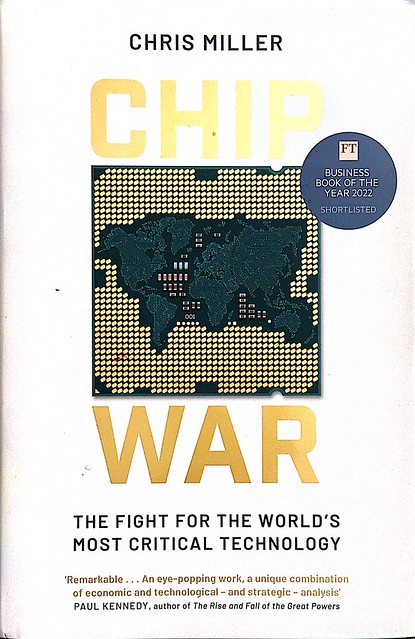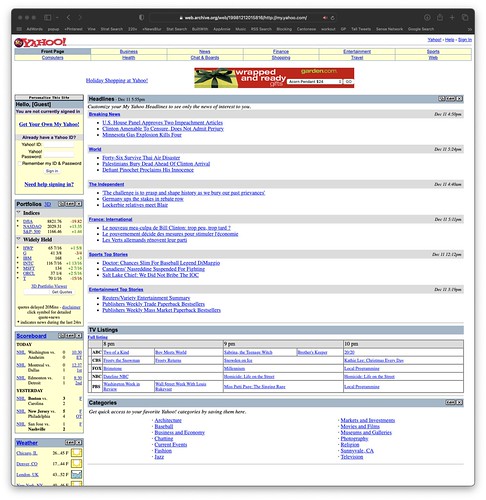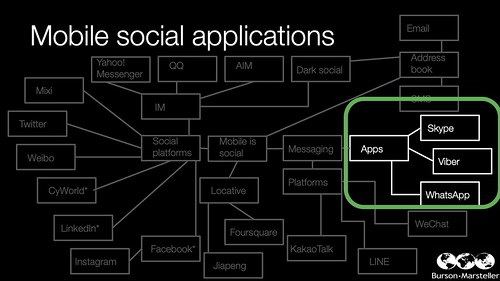Geico advertising
What prompted me to write about Geico advertising was a stream of news from marketing services companies about the state of technology company advertising. At the time of writing Stagwell are just the latest marketing services firm after S4, IPG, Omnicom and WPP have pinned declining profits on a reduction in technology company advertising spend. Then this story broke about Geico advertising: Insurer Geico made more money after benching its famous gecko | Quartz – and my first reaction was that the wrong lessons might be taken away from this.
Geico advertising – a primer
Geico îs an unfamiliar name to most people outside of the US. If you’ve read American magazines chances are there was a print ad or two in there with their iconic Gecko spokesperson. It’s a similar case on American television.
Geico advertising and their Gecko are as familiar to Americans as the meerkats of Comparethemarket.com are to your average Brits.
The truth about technology marketers vs. Geico advertising
Having worked with technology brands on and off for the past three decades, I have enough experience to know that generally, they aren’t great marketing organisations.
Growth mindset ≠ marketing mindset
As organisations, they have a growth mindset, but not a marketing mindset. Before the internet, this meant a powerful field sales force organisation and marketing meant a bit of branding / design work coupled with case studies for the sales people. With the internet came constant iterative ‘growth hacking’ on digital channels, that mirrors agile software development rather than the best practices of marketing science.
There is a good reason why organisations like the Ehrenberg-Bass Institute for Marketing Science are supported by FMCG manufacturers, luxury goods makers, media companies, marketing services firms and pharmaceutical companies, BUT has no technology company sponsors.
The reasons are cultural in nature:
- Engineering – if I haven’t heard of it or invented it then it’s not valid and you’re just a suit. At best great product is the marketing – and that’s great if you have a clearly differentiated great product which is self evident. The engineering mindset is also why they trust adtech and marketing automation services which outsource your marketing communications approach to a black box
- Sales – marketing is just support. Which is the reason why my early clients (like old school Silicon Valley royalty LSI Logic) promoted long serving secretaries and administration staff into marketing roles
- Even if they had a marketer who knew about Ehrenberg-Bass they wouldn’t be able to get in buy-in from the wider organisation to participate and they’d likely be fighting other dumpster fires elsewhere
Secondly, their laser focus on data affects their outlook. To paraphrase the comedian Bill Hicks: they know the price of everything, but the value of nothing. Because they are only looking at short term data. Great marketing and advertising also has long term effects that both screws with the short term marketing data focus.
Marketing and growth hacking are considered synonymous. It would seem ridiculous for me to to claim in any large marketing orientated organisation that sales and marketing are synonymous. The differences and complementary aspects of both would be well known. Yet in technology companies, this isn’t the case.
By contrast Geico as a brand is an organisation who understood marketing. You make your car or house insurance decision at best once a year (though there is friction in making a change).
The technology sector approach would be for Geico to bid on search ads and aggregators to acquire customers and then do direct mail or email when it comes to renewal times. But Geico advertising does something different. Geico advertising builds mental framework, so that Geico means car insurance and will be one of the brands that you consider.
This achieves a few things:
- You are less likely to move away from Geico, you may not love them, but searching for an alternative might be too much of a hassle.
- You may be reassured that you have chosen ‘the’ car insurance
- It helps new customers get over the ‘which car insurance company to choose’ decision
- It helps with upsell on the products due to the reassurance of the brand
Technology companies deal with these problems in a slightly different way:
- Certification of engineering staff. If you are Microsoft certified or Cisco certified, you are less likely to use open source software or Juniper Networks products respectively. It would be against your self interest and the investment in terms of time and money that you have made in your self development
- Contractual lock-in – self explanatory
- Technology lock-in. You can put your data or programming code into a particular system, but its much harder and more expensive to move on to another system
- Owning the entire technology stack. This is the approach that Adobe Systems have taken, gradually acquiring over the years the entire marketing, workflow and creative systems used by ad agencies, media agencies and their clients
So why was Geico advertising spend cut?
This is the crux of my point about how the wrong lessons might be taken away from the Geico advertising spend cut, with no ‘apparent’ impact.
There are a number of good reasons why Geico made the cut in advertising spend:
- There was a cut in insurance sector advertising overall, so that Geico maintained or even grew its relative share of voice while spending less. This should see it emerge with improved economic performance over time. Procter and Gamble became the behemoth it now is by INCREASING advertising during the great depression of the 1920s. So the idea of relative share of voice and its relationship to market share is older than I am. Further more research by the IPA has found that holding or increasing relative share of voice during a downturn has a positive impact for business performance over a five year period
- Geico may have managed to make some efficiency gains, this is most likely to occur in brand activating activities
There is also a bad reason: saving money in the short term. Kraft Heinz cut marketing to the bone under the guise of zero based budgeting (ZBB) – which made a mockery of ZBB as a concept. Kraft Heinz shares massively underperformed and were down 60% in the last 5 years, compared to the S&P 500 having gone up 69%. If Geico is following this route then it bodes ill for the long term performance of the business.
Without us knowing the real reasons and focusing on the short term measure, it reinforces a growth hacking mindset.
Beauty
Beauty hotspots: Why global giants are circling Australian brands | Vogue Business – well developed brands, celebrity and influencer brands have less longevity and are over-priced by comparison
Trends Shaping the Future of the Skincare Industry | Mintel
Farfetch to shut down its beauty business | Vogue Business – interesting e-commerce specific issues
Business
A Chinese Electronics Empire – The Wire China – on Midea
China
The China Convergence – by N.S. Lyons – The Upheaval
Chinese developer’s cancelled share placement fuels property sector woes | Financial Times – this is interesting as Country Garden is one of the country’s better run developers and hasn’t done as many things that could be considered hubristic in nature. And the second shoe drops: China’s Country Garden misses bond payments as turmoil grips property sector | Financial Times
Anger in China over plan to use cities as ‘moat’ to save Beijing from floods | China | The Guardian
China’s embassy to Russia criticises treatment of citizens at border | Reuters
Weekly news roundup: China’s strides and setbacks in semiconductor self-sufficiency and other top stories – interesting that China is going for self sufficiency across all aspects of semiconductors from raw materials to processes
Reckoning in China: Behind Xi Jinping’s Firing of Top Beijing Officials | Daily Beast
White House unveils ban on US investment in Chinese tech sectors | Financial Times
Chinese economy falls into deflation as recovery stumbles | Financial Times
China’s Plan to Rule the World’s Smart Devices, FCC Urged to Act | Newsweek
Consumer behaviour
Invasion of Food Delivery Robots is Driving People to Vandalism and Theft | Futurism – no opportunity is bringing out the worst in some people
Hard times mean no sustainability premium in North America | WARC | The Feed – every single economic recession this comes around and marketers are surprised. Time to pay attention to what the longitudinal research data says. I really like the work that Gallup have done on macro trends and the American consumer, in particular their work on attitudes to the environment.
Culture
Economics
Risk perceptions and economic activity in the United Kingdom | Bank Underground
VC Optimism Returning But More Pain Ahead In Their Portfolios | Hunter Walk
Energy
The growth of lithium-ion battery power | The Economist – hitting a natural limit of price / energy provided
Gadgets
Apple seeks to bolster expertise in generative AI on mobile devices | Financial Times
Germany
Bertelsmann Investments to plough $700mn into Chinese start-ups | Financial Times
Health
‘Pokémon Sleep’ Review: Sleep-Tracking Game Made Me Into Snorlax – gamifying sleep. Pokemon Sleep has surged to 3.2M global downloads and an estimated $130k in daily revenue according to SensorTower data. The app ranked in the top 5 in the U.S. Games charts. It’s even more popular in Japan (the home of Pokemon), where it’s number 1 across the App Store categories
MSLs drive 1.5x adoption in first six months | Klick Wire – launch tactic
Hong Kong
Bruce Lee’s legacy squares up to modern life in Hong Kong | Reuters
‘Long-distance’ is the new ‘soft’ | Big Lychee, Various Sectors
Canadian Case Exposes Hong Kong Developer’s Corporate Ties to Chinese Criminal Underworld – OCCRP
How to
INFER Public | The Pub Blog – Using AI to improve your forecast rationale
Japan
FEATURE: Samurai and Son – The Oral History of SHOGUN ASSASSIN! – Tokyoscope has the inside track on the American version of Lone Wolf & Cub part two
Luxury
Bentley’s global sales drop 4pc in first half of 2023 | Luxury Daily
Marketing
Using attention to scale creative excellence at Mars | WARC – Sales, distinctive assets, and attention to advertising are the go-to metrics to guide marketing decisions at Mars. Mars use Attention as a pre-testing tool, to inform creative choices in digital and also proxy in TV. Mars believe that an execution with a better attention score will travel across media channels better and will be a safer bet for you when you need to make a choice. Measuring Attention is a key element in helping us improve the creative hit rate. Advertisers should question how they measure consumer responses and focus on measures of real consumer behavior.
Thinkerbell co-founders on life after PwC – by Tim Burrowes
Materials
Musk still mulling massive Tesla plant for Indonesia | Asia Times – Indonesia is one of the biggest supplies of Nickel in the world and have been focused on exploiting it in a way that maximises the economic benefit to Indonesians
Media
Advertising has reached a new low in the age of podcasts | Financial Times and WPP & Spotify announce first-of-its-kind global partnership | WPP
Influencer Marketing on Instagram: Empirical Research on Social Media Engagement with Sponsored Posts and Sponsored posts and microinfluencers deliver greater engagement on Instagram | WARC – Sponsored posts of social media influencers (SMIs) outperformed their non-sponsored posts in terms of generating more comments and “likes” than NSPs. The average number of engagements for sponsored posts was 1,559.2, beating a comparative figure of 1,157.4 for non-sponsored posts. Median engagement totals for sponsored posts came in at 747, while the median engagement for NSPs stood at 401.
Online
China proposes tighter limits on children’s use of tech | Financial Times
How effective is Russian propaganda? | Financial Times
LinkedIn Workplace Halts Services in China Starting Today – Pandaily – I was a bit surprised as I thought Linkedn had left a few years ago
Security
UK defence group BAE Systems lifts profit forecast as military spending soars | Financial Times and Britain’s investors shy away from UK defence companies | Financial Times
The untold history of today’s Russian-speaking hackers | Financial Times
Former U.S. Officials Urge New Export Alliance on China – EE Times
Microsoft downplays damaging report on Chinese hacking its own engineers vetted – this could go bad for Microsoft: US senator victim-blames Microsoft for Chinese hack
Five Eyes nations list 12 most exploited vulnerabilities • The Register – Fortinet products are coming off very badly in this list
Exclusive: North Korean hackers breached top Russian missile maker | Reuters
On publicizing Chinese hacking success – by Graham Webster – really interesting observations here
Drug-related killings add to instability in Syria’s south | Asia Times
Software
Should an AI bot making $1mn really be the next Turing test? | Financial Times – also what does it say about being human?
Zoom wants to train its AI on content from all user calls | Quartz – combine the legal overreach with concerns about Zoom’s connections with the Chinese government and you can see how bad this is likely to get
Style
Yeezy drops are still boosting Adidas profits | Vogue Business
Technology
AMD Q2 – Building Momentum? | Digits to Dollars
Radar Trends to Watch: August 2023 – O’Reilly
White House unveils ban on US investment in Chinese tech sectors | Financial Times
Web of no web
Taiwan’s satellite supply chain empowering international market entry










